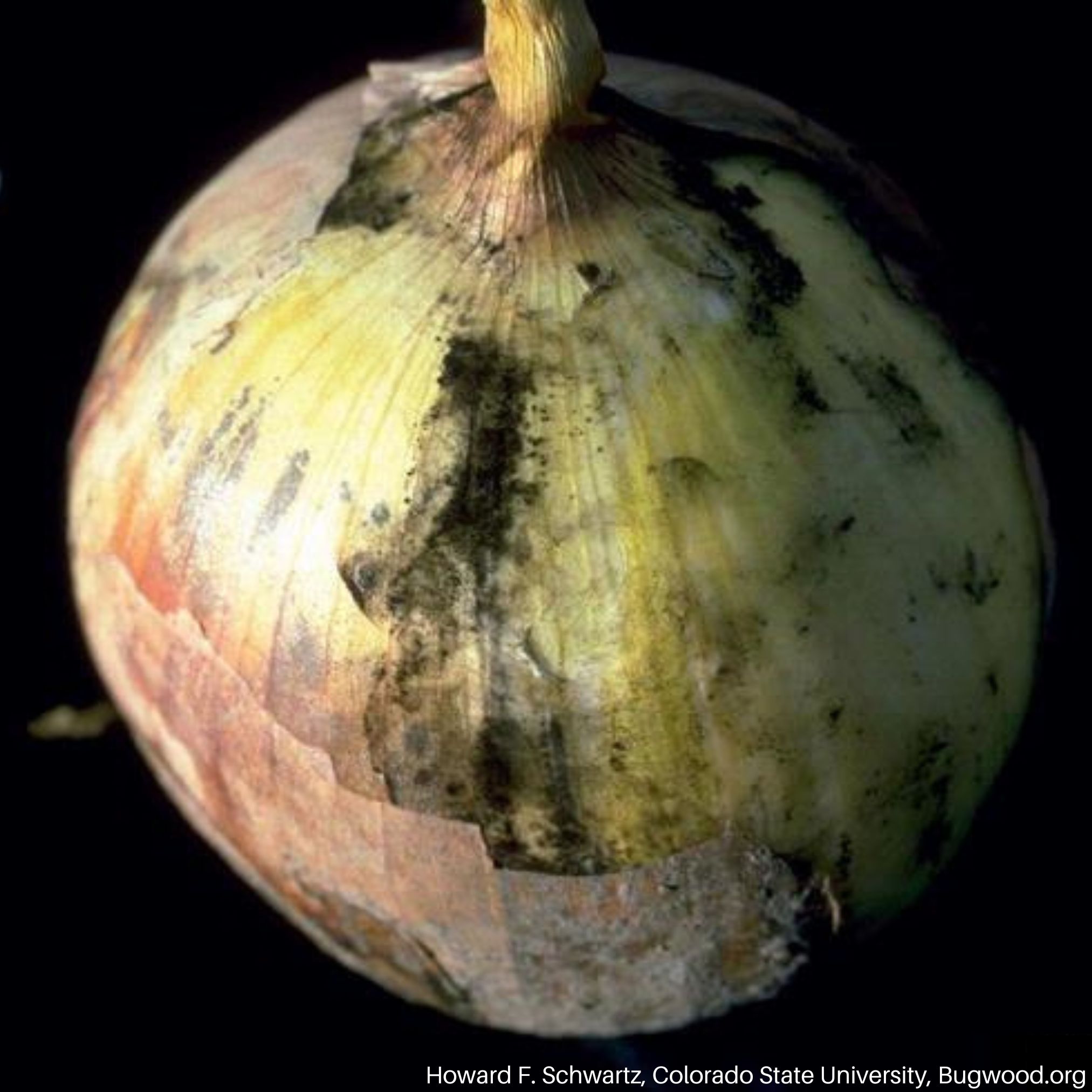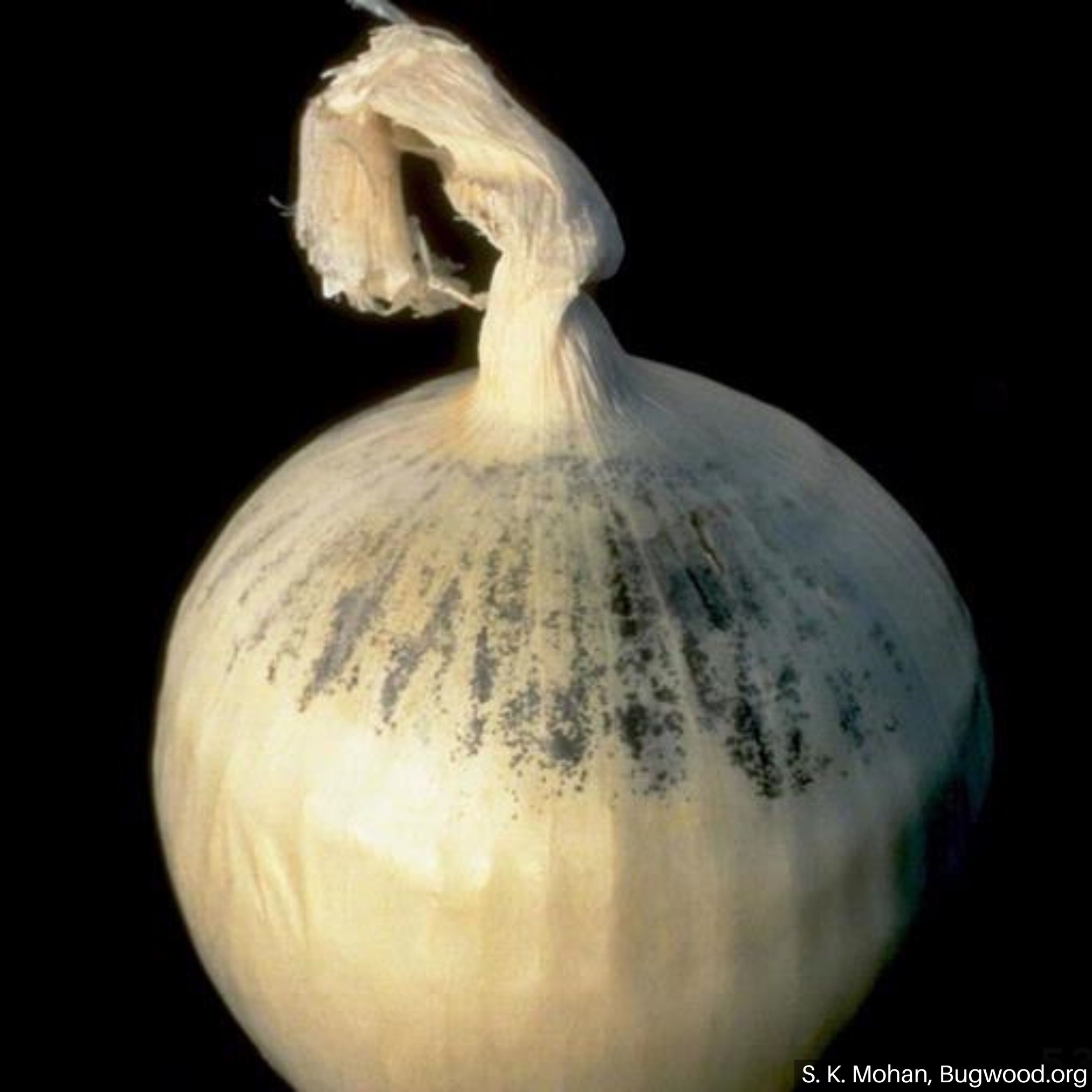Black Mold
 Black mold on onion
Black mold on onion Onion with brown discoloration
Onion with brown discoloration Onion with symptoms of black mold
Onion with symptoms of black mold Black mold visible under onion skin
Black mold visible under onion skinHOSTS
- Onion
DESCRIPTION
Aspergillus niger is a commonly found fungus that causes mold on many vegetables including onion. Without a microscope the spores can be mistaken for smut another fungus that can affect onions. However, in Utah smut is rare.
BIOLOGY
Aspergillus spores are airborne, soilborne and seedborne. The fungus can survive on plant debris. Infection usually occurs wounds in the bulb.
The disease is worse under warm condition especially during storage. Optimum growing conditions are 82-93°F. Harvested onions should be stored at cool temperatures as soon as possible. If long-distance transport occurs under warm conditions the fungus will resume growth even if onions had been stored in cool conditions.
SYMPTOMS
- Black discoloration in the neck area
- Dark lesions with spores developing under outer scales
- Bulb rot
GENERAL MANAGEMENT
- Prevent wounding or bruising of bulbs
- Store and transport bulbs below 59°F
Precautionary Statement: Utah State University and its employees are not responsible for the use, misuse, or damage caused by application or misapplication of products or information mentioned in this document. All pesticides are labeled with ingredients, instructions, and risks, and not all are registered for edible crops. “Restricted use” pesticides may only be applied by a licensed applicator. The pesticide applicator is legally responsible for proper use. USU makes no endorsement of the products listed in this publication.

